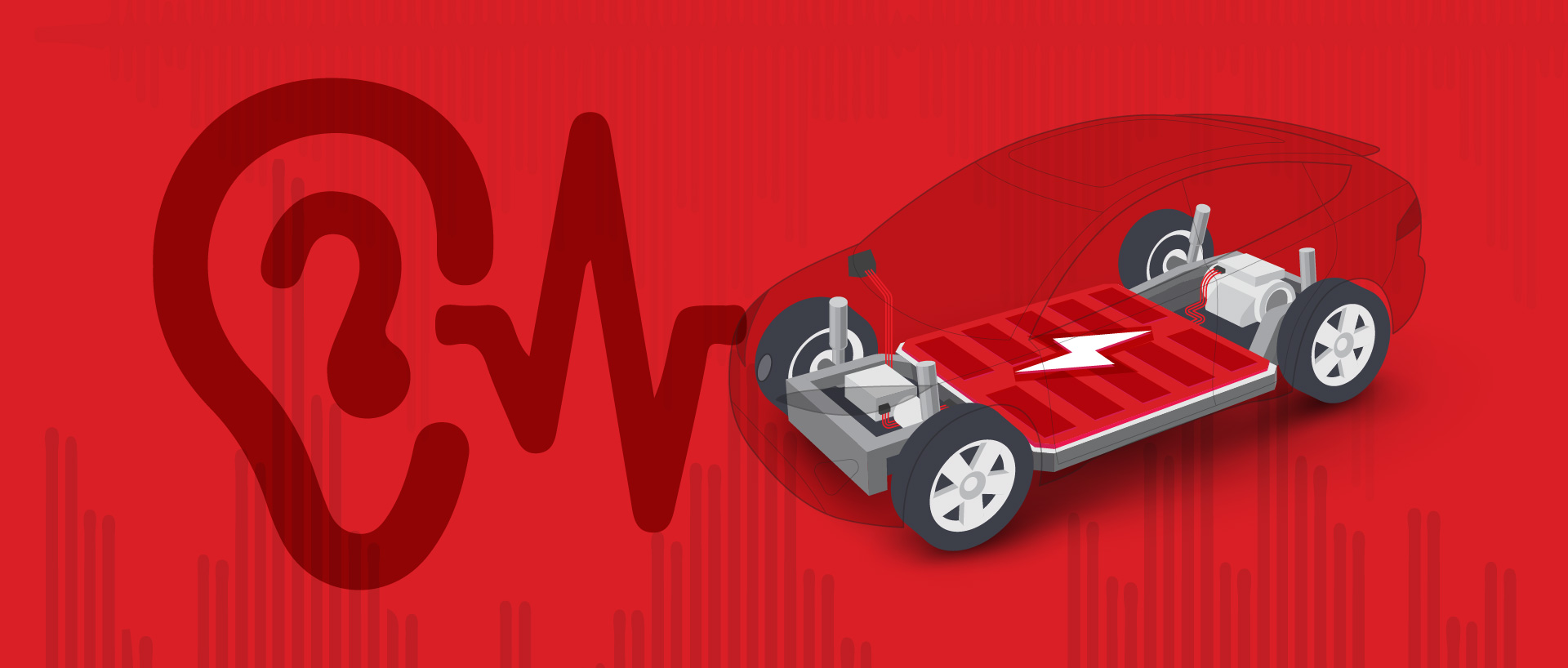Overcoming OEM Challenges for Noise, Vibration & Harshness in BEVs
September 7, 2022

It’s 6:42 am during your morning commute and you hear a faint thunk, thunk, thunk over the sound of your engine. You turn down the radio and wonder, Has my car always made that noise? Should I take it in?
Struggling to hear and interpret noises over the sound of an engine is par for the course when driving internal combustion engine (ICE) vehicles. But without the sound of an engine to mask noises from other vehicle components, battery electric vehicle (BEV) drivers will be able to hear every click, whir and bump, on top of wind and road noise – making for a driving experience that’s noisy (and annoying) in a whole new way. On top of that, drivers may take their vehicles in for service more often because they hear noises that were drowned out by their previous ICE vehicle’s engine – creating a learning curve as consumers readjust to a new driving experience.
While these challenges aren’t often top of mind when consumers think about the BEV journey to market – they more often point to range and charging options – engineers have considered noise, vibration and harshness (NVH) performance in vehicles for decades.
It can be hard to understand the effect that NVH has on drivers, as the vast majority have dealt with NVH situations associated with ICE vehicles their entire lives. However, according to SAE International, vehicle accessory, road and wind noise can cause driver fatigue and an overall negative effect on the passenger experience in long, high-speed vehicle travel. Without the noise of the engine, sounds from HVAC systems, chassis components and switching mechanisms become more prominent. Thus, OEMs must consider the NVH performance of every component in a BEV.
While motors can also be controlled to generate white noise to mask sounds, Nexteer is addressing these challenges through innovation at the chassis level to create a more comfortable driving experience.
Steering & Driveline Technologies for Quieter, More Efficient BEVs
As a global leader in intuitive motion control, Nexteer has tailored our steering and driveline technologies to offer superior NVH performance and comfort – creating components that are as quiet, smooth and efficient as possible. This focus on acoustic and vibration performance at the chassis level will help overcome OEM challenges with BEVs and give drivers more comfortable BEV driving experiences.

In the driveline product line, innovations such as premium, specialized joints help us deliver low friction and the NVH performance that OEMs and BEV drivers need. Our TriGlide Joints deliver industry-leading NVH performance and Ball Spline Axles enable NVH improvements along with extreme durability, even at ultra-high driveline angles. Apart from NVH advantages, Nexteer’s driveline products support BEVs by offering low mass, compact solutions that help accommodate the space batteries need, as well as expanded fatigue requirements due to increased torque and regenerative braking duty cycle. Lightweight products and high efficiency joints also help reduce overall vehicle weight – thus improving battery driving range.
In steering systems, our focus on steering sub-system acoustic and vibration performance across both electric power steering (EPS) and steer-by-wire (SbW) systems optimizes NVH performance to overcome the challenges presented by BEVs. In addition, our high output, under-hood EPS systems can accommodate heavier load requirements of BEVs with increased battery weight.
As the transition to a more electrified future continues, we work with our OEM customers to anticipate and overcome challenges, such as NVH. We are committed to working with OEMs to accelerate mobility – including BEVs – to be safe, green and exciting.





